As part of The American Jobs Plan, President Biden has committed to 100% carbon-free electricity by 2035. While the solar and wind industries are already growing their workforce much more quickly than the fossil fuel industry, Biden’s plan could increase clean energy employment exponentially. However, a big question remains – can solar and wind energy jobs increase salaries to be more in line with fossil fuel jobs, and can they get there without the help of the unions? HBCU CDAC Clean Energy Initiative explores the topic further.
Today, about 4 percent of solar industry workers and 6 percent of wind workers are unionized, according to the 2020 U.S. Energy and Employment Report. While that seems like a low percentage, those rates are in line with the national rate of unionized workers in the private sector, about 6.3 percent. However, in the fossil fuel industry, union rates are nearly double that and range from 10% to17% depending on the type of job. Unions are one of the main reasons why salaries differ dramatically between industries. For example, according to the Bureau of Labor Statistics, the 2019 median annual wage for solar photovoltaic installers was $44,890, while the median annual wage for wind turbine service technicians was $52,910. Comparatively, jobs in the fossil fuel sector pay between $70,310 and $81,460, with oil rig and refinery workers making up to $100,000 per year.
Even though the future is in clean energy jobs, unions are reluctant to recruit clean energy workers because more solar and wind jobs mean losing more fossil fuel jobs for their members. There also has been an ongoing battle between environmentalists and the unions. However, by working together, they could not only help to reverse climate change, but they could replace fossil fuel employment with good-paying clean energy jobs.
When the mining industry began to close mines and lay off hundreds of thousands of workers, most environmentalists applauded it as a win. However, it was not a win for working people or the unions that represented them. The United Mine Workers of America, at its peak, had over 800,000 members. In comparison, it now primarily serves as a retirees’ organization with only a few thousand working members in the manufacturing and health care industries and workers across the Navajo Nation. But when union membership is low, the jobs created are often also lower-paying and can lack benefits and safety regulations. And every time an employer of union labor outsources or shuts down, it affects not only those newly unemployed workers, but all workers, union or not. As Mindy Isser wrote in a recent article, “Unions are one of the only ways working people have power in this country — without them, there will be very few organizations equipped to fight for the programs and services we deserve, including ones that are tasked with fighting climate change.”
Despite the lack of solid traction so far, some encouraging signs of both unions gained traction, and environmentalists are starting to work with unions. AES Solar became a Union Electrical Contractor by joining the IBEW (International Brotherhood of Electrical Workers). While most private employers don’t want their employees joining unions, i.e., Elon Musk, the founder of AES Solar, felt differently. As Aur Beck, founder and Chief Technologist put it, “For me, someone who joins the union is someone who is doing it as a career and not just a job–someone who is committed to showing up to work hard and doing continued education training to become a better worker.” Another union working in the renewable energy field for over a decade and gaining more membership is LIUNA. A new renewable energy standard in California has allowed its’ members to increase their work on green projects – putting more than 1,300 members to work to date. An additional 1,000 jobs are projected to be added over the next year in solar, wind, and geothermal power plants.
An example of unions and environmentalists bridging their differences was a project that The Worker Institute launched at Cornell. Labor Leading on Climate brought together unions, workers’ organizations, and policy experts to focus on green job creation through research, education, and legislation. This also led to a coalition called Climate Jobs NY, a growing consortium of labor unions representing 2.6 million members committed to building a clean energy economy, creating good union jobs, and supporting equitable communities.
So, while the jury is still out on whether green energy jobs can become a way to lift the working class, there is reason to be hopeful. However, to truly help the working class, the clean energy workforce needs to include all Americans and not just white Americans. The industry and the unions are not nearly as diversified as they should be, but organizations are trying to change that. HBCU CDAC Clean Energy Initiative, in coordination with HBCUs, is one of them. The bottom line is that we need unions and environmental organizations working together to fight for investment, incentives, and jobs — for all Americans.
To read more of our blogs, click here

